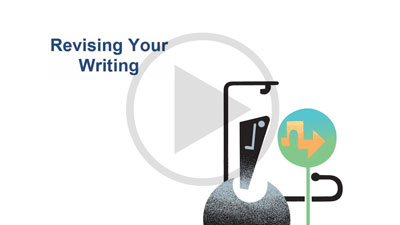So, you just finished drafting an important workplace document. What should you do next?
Some writers dive right into editing, checking their work for surface-level errors like spelling, grammar, and punctuation. They believe if the document is error-free and well designed, it is ready to send.
But that’s not always the case. In fact, those writers skipped a crucial step in the writing process: revision.
Revising helps you find and fix larger issues that lead to miscommunication and missed opportunities.
Make sure you leave ample time for both revising and editing, especially for high-stakes writing. Use the advice and resources below as you work through each step.
How do revising and editing differ?
Revising and editing improve writing, but in different ways. The goal of revision is to fix content problems with the first draft, while the goal of editing is to fine-tune the piece before sending it out.
When revising, you focus on the ideas, organization, and voice of your writing. Then you check your words and sentences.
When editing, you focus on punctuation, grammar, usage, and mechanics. Finally, you check the formatting and design.
How can I revise and edit effectively?
Let the writing breathe. Take some time between writing, revising, and editing. That way you will approach each step with fresh eyes.
Work on each step separately. When revising, focus on the big picture. If you introduce any new errors when you revise, you can catch them later while editing.
Follow revision strategies: Cut, add, reorganize, and rewrite.

Reread your work slowly and out loud. Both reading strategies will help you uncover problems and catch mistakes.
Use a checklist. This checklist helps you focus your attention throughout the writing process.
Share your work with an objective reader. Sometimes you will get too close to your writing to see potential problems. Share your writing with a trusted coworker to gain a fresh perspective.
Keep resources handy. Refer to the Write for Business Guide or your company's style sheet for answers to your writing questions.
|